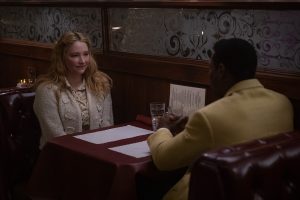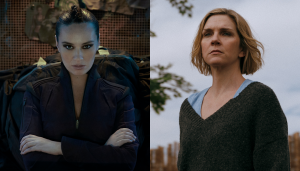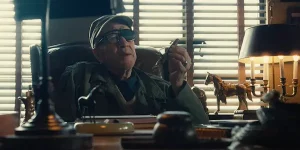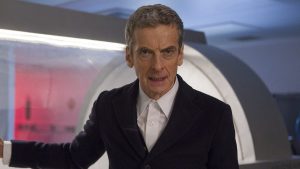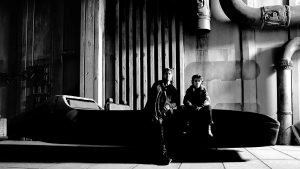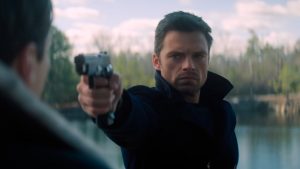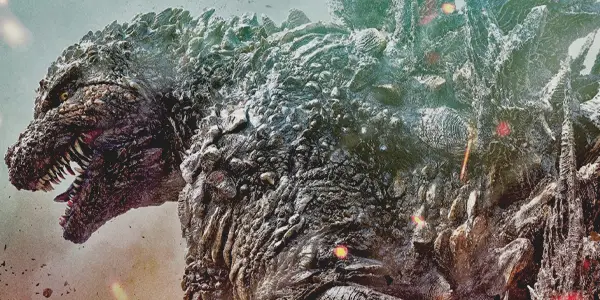
Early in Takashi Yamazaki’s Godzilla Minus One — before the titular reptilian beast even appears on screen — a defected Japanese soldier named Koichi Shikishima (Ryunosuke Kamiki) pouts on the shore of Odo Island. He’s landed his plane there as a means to escape the inevitability of his fate as a kamikaze pilot, something most men on the island, including the lead mechanic Tachibana (Munetaka Aoki), find despicable. But one mechanic approaches Koichi and assures him that he’s on his side, saying, “Why honor an order to ‘die honorably’ when the outcome is already so clear?”
Which is perhaps an ironic way for Toho Studios’ 33rd feature Godzilla film to open, especially considering the fact that just minutes later, the terrifying Japanese Kaiju emerges from the sea and wipes out the entire island, save Koichi and Tachibana. It could be argued that the outcome of every Godzilla film is clear from the jump: the monster appears, terrorizes cities, and eventually, is defeated… for the time being. And it would be plenty fair to say the Minus One follows that framework, though it would be just as unfair to say it strictly limits itself to those beats.
Instead, Minus One goes beyond the unthinkable carnage Godzilla can inflict and delves into how its presence impacts the daily lives and mental states of the people it terrorizes, as well as the socio-and-geopolitical consequences Japanese citizens must bear simply due to the unfortunate fact that this (fictional) creature can’t seem to quit their country. Yamazaki — who wrote, directed, and co-handled visual effects on this, his 20th feature — deftly moderates the typical all-out warfare of a run-of-the-mill Godzilla film so as to layer in these beats audiences won’t be used to seeing in the genre, but shouldn’t be deterred by either.
A different breed of monster movie
That isn’t to say that Minus One eschews said annihilation entirely; as mentioned, within minutes, an entire island is wiped out, and that’s only the first of Godzilla’s escapades over the ensuing two hours. But this is more of a human story than most modern audiences would expect, probably due to the schlock and awe approach of Warner Bros.’ attempts at reviving the iconic monster in recent years — not to mention their insistence on pitting it against its equally-enormous gorilla counterpart. (Or are they teammates now? I can’t keep up.)
Our main human in this tale, the aforementioned Koichi, spends the years following his first encounter with Godzilla wracked with PTSD, both because of what he’s seen and what he hasn’t. He’s also ravaged by guilt for not having fulfilled his duties as a suicide bomber, his survival serving as a daily reminder of his failure to, well, die like the rest of his fellow soldiers did.
source: Toho
Early in the film, Koichi returns home to a decimated village, his family and that of every other inhabitant having been wiped out by attacks endured throughout World War II. When he encounters a young woman and the child she’s saved from being orphaned (Minami Hamabe and Sae Nagatani, respectively), his already upended life experiences a different sort of turbulence: How is a broken man meant to help others put their world’s back together if he’s struggling to pick up the pieces of his own?
In time, Koichi finds work on a rig that has been deployed to uncover and subsequently destroy landmines planted by enemy countries during World War II. He’s placed longside a band of mercenaries led by Noda (Hidetaka Yoshioka), a former engineer for the Japanese Navy, Akitsu (Kuranosuke Sasaki), the boat’s captain, and Mizushima (Yuki Yamada), the crew’s resident youngster.
Finding one’s self amidst rubble
This work, however dangerous, allows Koichi to better adapt to his rubbled surroundings and his two found families of sorts, building up his world from within the confines of his soul as it expands on the outside, too. He makes good money, enough to have the shell of a home he returned to after the war refurbished, enough to buy a motorcycle. The man who was so consumed by guilt for having survived a job that required him to perish suddenly begins to find reasons to live again.
source: Toho
All of which, of course, is backdropped by inevitable dread that Godzilla will return — he does — and wreak more havoc — you bet. And when he does, the manner in which he is destructive is innovative and appropriate for Minus One’s post-war time period. His fiery, blue breath charges up like a laser cannon but lands like a hydrogen bomb, wiping out a city with the same swift ferocity of the explosives that were developed by enemy countries during World War II.
But it’s explorations like those Yamazaki refuses to let fade into the background that elevates Minus One beyond what could have easily been framed as “just another Godzilla film.” Instead, it’s a blockbuster that dials up the heart when other iterations may have invested more time (and money) in shoddy, less-than-effective visual effects. It’s a monster movie that dares to let its characters ask questions about the horrors they’ve faced; “Can I put this all to rest?” Koichi asks, speaking to the demons he’s carried for years since the war. “I’d like to try to live again.” It’s the kind of self-examination you might never expect to see in a film with “Godzilla” in the title, and it’s all the better for it.
Does content like this matter to you?
Become a Member and support film journalism. Unlock access to all of Film Inquiry`s great articles. Join a community of like-minded readers who are passionate about cinema – get access to our private members Network, give back to independent filmmakers, and more.
